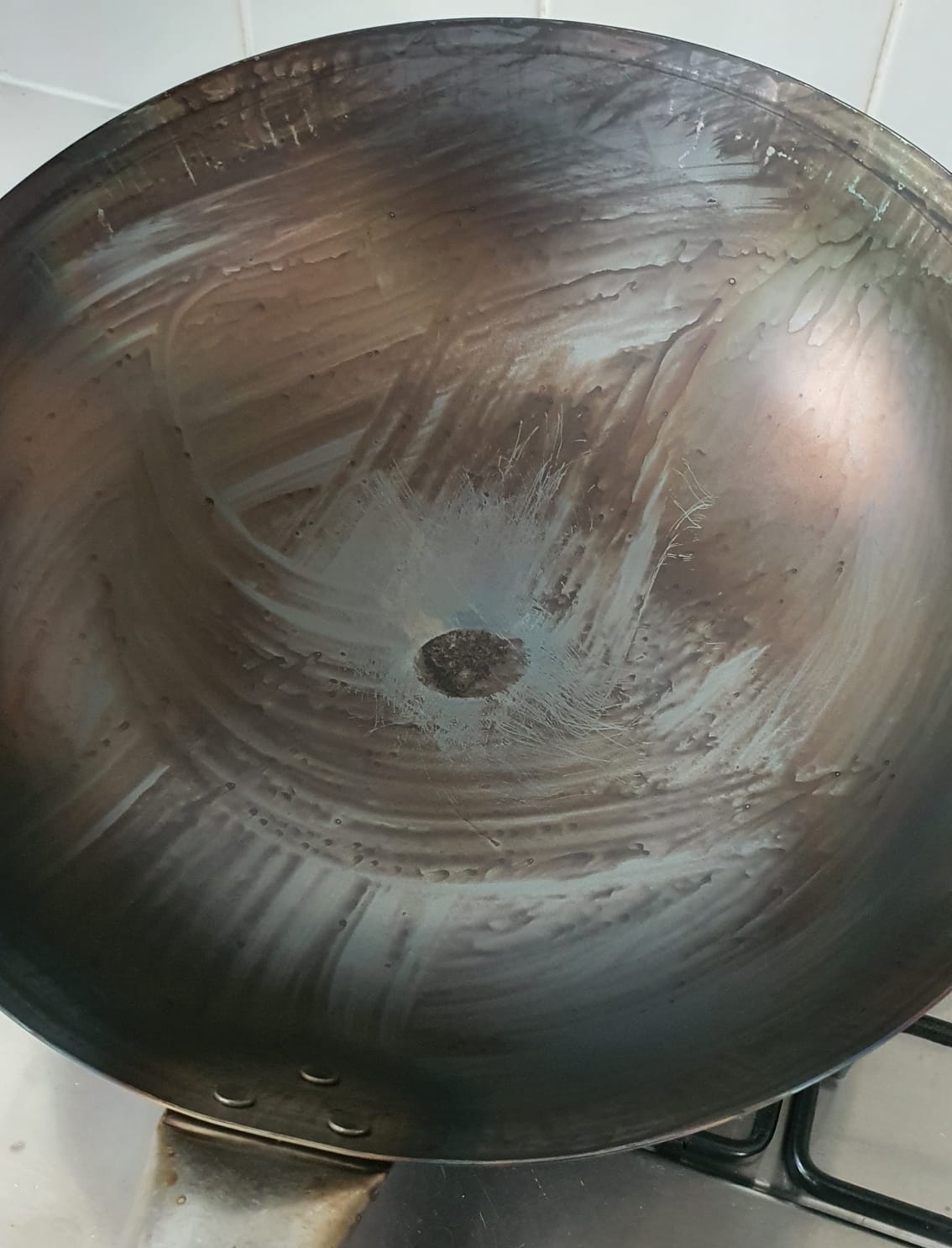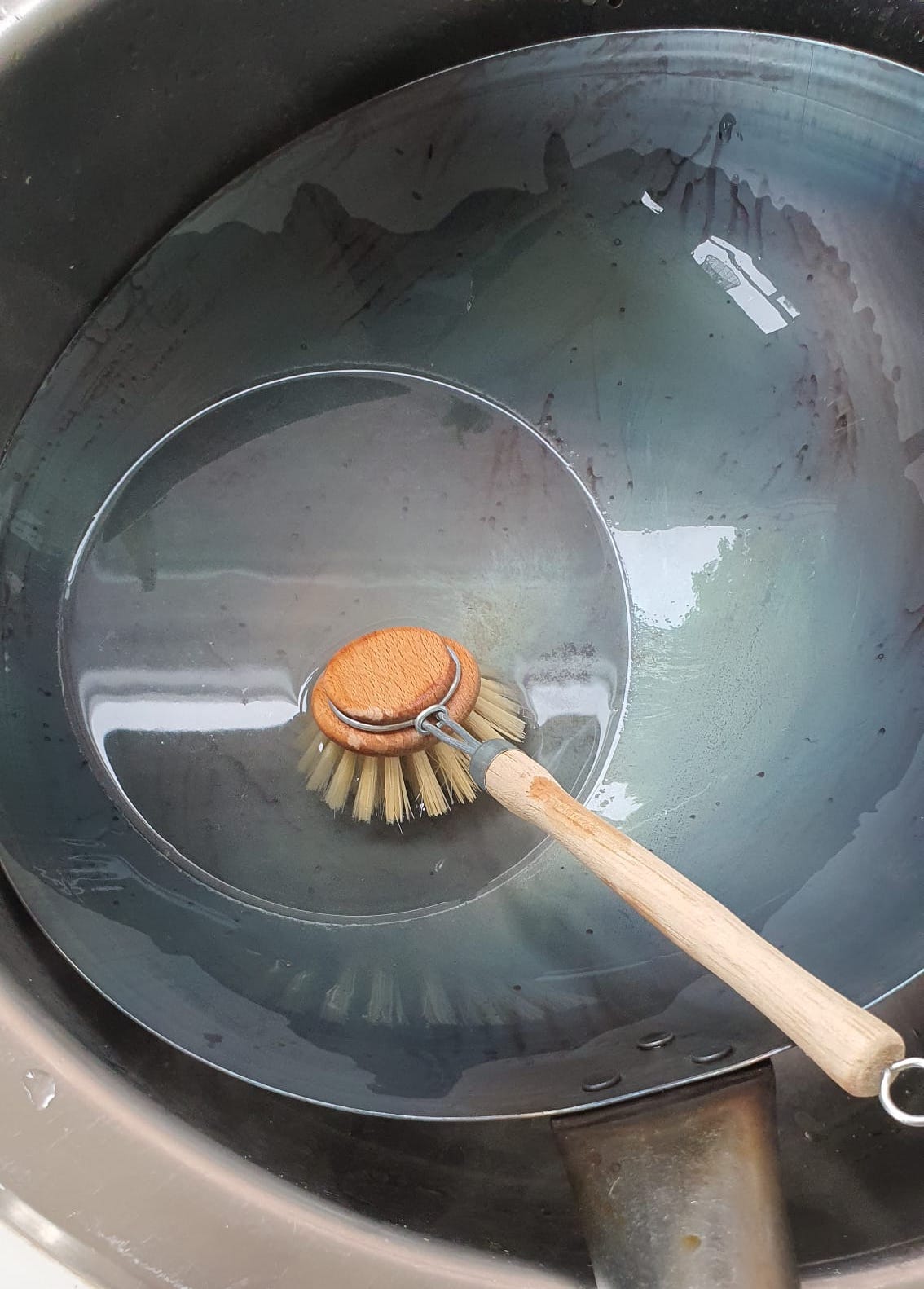Though I’ve worked in hospitality since I was 18 - flipping burgers at a joint, being a server at a French fine-dining restaurant, part-timing as a cook on an assembly line at a café - my first proper, cooking job in restaurants came at 23, fresh out of school. I had sent a cold email to one of my favourite places to eat at then and was told that there wasn’t a vacancy, but if I wanted to, I could work at a new restaurant that the owners were opening. I was enticed by their vision and signed the contract.
A couple of weeks later, I showed up at the restaurant and met the rest of the opening team - my head chef, and two highly seasoned line cooks with decades of experience between them. While I was mostly relied on my head chef for instruction and guidance, my two colleagues set up their stations in a wordless dance - peeling labels off the new cast-iron pans, placing them on the stoves, taking them off when a blue sheen had formed, and repeating the process with more pans. I had never seen anyone season pans before and had no idea it was necessary - I always thought pans were used straight out of the box.
I’ve never really needed to season a wok. My first wok came from my mother-in-law, a sprawling vessel measuring 17 inches across in diameter. It was not a traditional carbon-steel wok; my mother-in-law had brought it over in her luggage from Singapore to Australia because it was relatively light. Enamel-coated, it was a breeze to maintain and I never had to worry about rust or food sticking to it, though its flatness and size bothered me at times. It served us well, but after 5 years, when we were decluttering and preparing for our move to the Netherlands, we decided to give it away.
I wanted my next wok to be one that I picked out for myself - one that I would care for, cook with, and maintain for a long time. The way I see it, a wok is a very personal item that accompanies one for life, much like a good knife or a jade bangle. We settled on one from the Asian grocer. Deeply domed, heavy in the hand, and 13 inches across, it had a stamp inked onto its wooden handle that traced its origins to Leung Tim from Hong Kong. We paid for it and brought it home.
Seasoning a wok is a necessary first step. Without it, anything you cook sticks hopelessly. The word refers to the high-temperature tempering of metal - swords, gun barrels, and carbon-steel woks - to prevent rusting. The internet is a treasure trove when it comes to finding information - but when everyone tells you a different thing about seasoning a wok, you get overwhelmed. I texted Weiping, a former colleague and pro with the wok, and followed her instructions.
1. First, the wok is set on high heat, rotating it every once in awhile. The heat initially spreads through the metal like a black bruise. Wok manufacturers coat the wok with an invisible, protective layer to prevent the carbon steel from rusting. When heated, this layer begins to burn off, resulting in the black patches.
Upon further heating, the black patches turned streaky, revealing the aqua-blue metal beneath. This is the naked carbon steel reacting with oxygen to form iron oxide, which appears blue. I began to see why seasoning a wok is synonymous with the term ‘bluing’.
I was standing over the flames cranked on high with the heat of the wok radiating over my face. Even with an audiobook on, my patience was wearing thin and I began to worry about my gas bill (the Russo-Ukrainian war has meant that gas prices are through the roof in the Netherlands). Still, Weiping told me that I only have to do this once and it lasts a lifetime, and encouraged me to have patience. Finally, at the one-hour mark, most of the streaks had disappeared and Weiping told me that if I am not bothered by the few streaks, I can stop.
2. Scrub in hot, mildly soapy water. I’ve read online that sometimes woks warp because of sharp temperature changes, so I added freshly boiled water and a pump of diluted detergent, and did my best to scrub the wok clean. I was disappointed to realise that the streaks would not come off no matter how hard I scrubbed, and so was grateful that I took Weiping’s advice and waited as long as I could with the heating. (P.S. This is the only time we use soap on the wok - once the oil coating is on, no abrasives or detergent is used on the wok.)
3. Heat the wok until it dries completely, then oil it inside and out. Blued carbon steel loves oil; it combines and bonds with it quickly. The oil completely transformed the appearance of the wok - while before it looked cheap, now it had a lustrous blue-black sheen and the streaks weren’t so obvious anymore. The oil also serves a non-aesthetic function; when coated with oil, the blued steel becomes rust-resistant and non-stick.
I’m itching to cook with my newly seasoned wok, so wok adventures to come soon!









I have carbon steel wok. Long time did not use. Started using. But noticed food cooked in it turns black eg. fried rice, brinjal. Why ? Do I need to season wok again ? My helper said because long time did not use.
The Japanese instruction manuals suggest to stir fry vegetable scraps - carrot peels, onion skins etc on the first try. Kind of like cleaning the noodle machines with a testing dough.